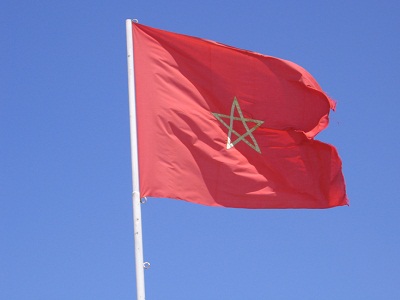Current discourse on the Arab Spring excludes social media as the sole perpetuator of the movement—but scholars and activists alike, agree that technology has helped to unify and project, citizen’s feeling of dissent.
My previous post about last Wednesday’s Future Tense event explored some speaker’s discussion on the West’s connection with new technologies, as either aiding or embedding the revolution.
Other panelists, however, elicited a more homegrown, internal perception on how the uprisings evolved.
 Merlyna Lim, Professor of at the Consortium of Science, Policy and Outcomes and the School of Social Transformation – Justice and Social Inquiry Program at Arizona State University, discussed origins of anti-Mubarak protests in Egypt.
Merlyna Lim, Professor of at the Consortium of Science, Policy and Outcomes and the School of Social Transformation – Justice and Social Inquiry Program at Arizona State University, discussed origins of anti-Mubarak protests in Egypt.
She claimed it was rooted before the Tahir moment occurred, stemming from three stages of organization—networks, narratives and claim making—to mobilize collective action.
The first protest organized exclusively online, without physical headquarters, was arranged by Kefaya in 2004. Using a website called Misr Digital, Lim recalls, the organizers increased the reach of the oppositions movement through the websites by engaging weak ties.
After the death of Khaled Said on June 6, 2010, the participatory youth culture, added emotions onto their organizational network’s narrative—and Egyptians feared being killed.
Khaled Said’s passing changed Egyptian’s view on human rights violations, the panelist stated. While it was once an abstract narrative, they are now saw concrete infringements by the regime—such as corruption, torture, and eventual death.
Egyptians shared these contentions, spreading them by networks. “The Tahir moment was facilitated by cabs, signs, cell phones, word of mouth, SMS, and social media provided the organizing platform,” Lim alluded.
Another panel convened by Oula Alrifai and Ahmed al-Omran discussed their firsthand perspectives on the violence in Syria, and the political and social issues of Saudi Arabia.
Alrifai, a Syrian youth activist discussed the origins of the Syrian protests. With no independent media and post-imprisonment of an Al Jazeera correspondent, she stated, social media and video were the only ways to get information about the revolutions to the outside work.
However, the connections to do so were not always available.
For activists, using cell phones with cameras was the easiest way to take pictures and record videos, but since they had no networks in the ground someimtes they had to cross the borders. Some activists, “were crossing the borders to go to Jordan to download the videos in Internet cafés and (would) come back and fight again or be on the street and protest, risking their lives,” Alrifai said.
Ahmed al-Omran, a blogger for his site saudijeans.org, discussed the excitement many have felt across the Gulf of the revolutions.
Though the demand for freedom and justice in his home country of Saudi Arabia is similar, the dynamic is different—elections do not exist, and Saudis are largely politically unaware because citizens are not allowed to, “practice politics”.
Ahmed only became aware of politics when he started blogging in 2004, as he was not raised discussing the government, but social media gave him an outlet to learn about them. “I think that the Internet and social media has given this generation a space where they can express themselves and engage with one another and talk about the issues that are typically hard to talk about in the public sphere,” he said.
Ahmed also stated that an uprising similar to Egypt will be difficult in Saudi Arabia because of the monarchy, but predicts it will occur because time is on the people’s side. “Money is a short term resolution, these issues need a fundamental solution,” Ahmed poignantly observed, “At some point the money will run out, the oil revenues will not be there forever”.
Though opinions vary on how imperative social media was to aiding the Arab Spring uprisings, almost all scholars and activists agree—it is an organizational tool that can bring like-minded individuals to collaborate for change.
















































